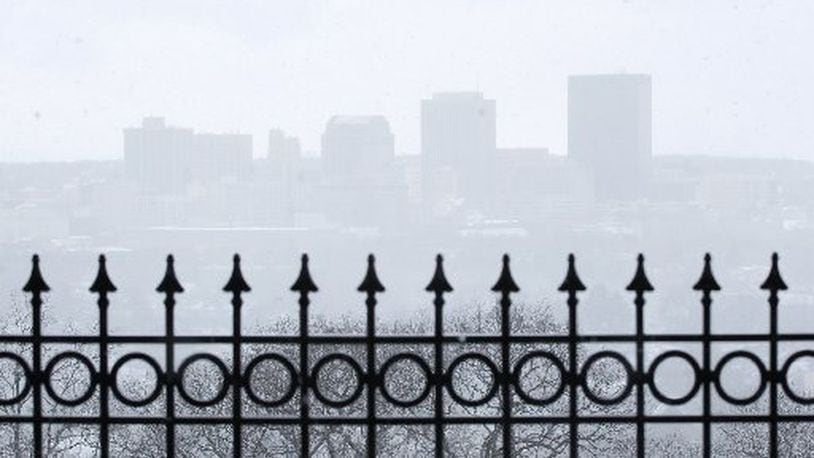Over the last few years, some of the most significant snow events have not been the typical winter storm. While snow storms can bring highs snow totals, it’s often snow squalls that catch many off-guard.
Fog in the winter: The difference between freezing and ice fog
Snow squalls can create intense, but short-lived, periods of heavy to moderate snowfall. These bursts of snow can often be associated with gusty winds that lead to reduced visibility and whiteout conditions. Rapid drop in temperatures associated with these snow squalls can then create slick roads. All are a recipe for disaster on the roads.
Because of the dangerous nature of snow squalls, the National Weather Service teamed up with the Ohio Department of Transportation last winter to get impact language added to road signs. This was in an effort to alert drivers to the potential of dangerous conditions on the roads.
The National Weather Service in Wilmington has now gone a step further. This year, when necessary, they will issue snow squall warnings. These warnings will be hyper-local and drawn with polygons like tornado warning. This is to help pinpoint the most intense snow squalls to alert small areas in the path rather than an entire county.
Recent studies show that, over the last 30 years, roughly 70 deaths have occurred nationally because of winter events. What may be the most alarming is nearly half of those deaths were a result of cold weather exposure.
Extreme cold is often caused by big dips in the jet stream allowing arctic air to surge southward into the states. This cold air can be enhanced further when combined with brisk winds, leading to dangerously cold wind chills.
Prolonged exposure to these bitter conditions can lead to frostbite or hypothermia. Some signs of frostbite include a burning sensations, tingling or numbing. Hypothermia can begin with shivering, followed by drowsiness, shallow breathing, slurred speech and, eventually, unconsciousness and death.
A secondary cause of death related to cold weather is being submerged in cold water. This, more times than not, occurs when someone falls through thin ice. According to the National Weather Service, roughly 20 percent of people who fall into cold water die in the first minute because of cold water shock.
Whether it be cold, snow, sleet or freezing rain, the chances of experiencing this kind of weather will increase over the next few months. While each forms in a different way, they all have their own risks.
The best way to stay safe during winter is to be prepared. Make an effort to know the forecast, have a plan and stay connected for updates on changing conditions. Also, if you haven’t already, make sure you have a winter survival kit in your car if you have to travel on a winter weather day.
About the Author
